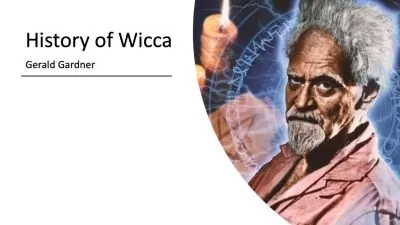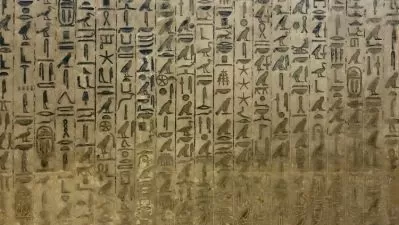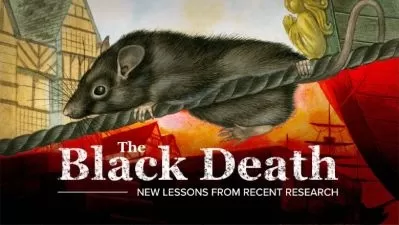Rome and the Barbarians
Kenneth W. Harl
18:13:25
Description
The history of the Romans and the "barbarians" they encountered as their mighty legions advanced the frontiers of Classical civilization has in large part been written as a story of warfare and conquest. But to tell the story on only that level leaves many questions unanswered, not only about the Romans but about the barbarians, as well.
- Who were the Celts, Goths, Huns, Persians, and so many others met by the Romans as they marched to the north and east? And what made them barbarians in the eyes of Rome?
- What were the political, military, and social institutions that made Rome so stable, allowing its power to be wielded against these different cultures for almost three centuries?
- What role did those institutions themselves play in assimilating barbarian peoples, first as provincials and often as players in a vast process of Romanization?
What Is a Barbarian? Explore the Basis of Western European Civilization
Rome and the Barbarians tells the story of the complex relationships between each of these native peoples and their Roman conquerors as they intermarried, exchanged ideas and mores, and, in the ensuing provincial Roman cultures, formed the basis of Western European civilization.
As you examine the interaction between Rome and the barbarians from 300 B.C. to A.D. 600, you learn that the definition of barbarian was, effectively, the "next group not under Roman control." And you see how that definition was always changing, as former barbarians became assimilated into the Roman world, becoming provincials and, often, eventually Romanized themselves.
In leading you through this 900-year period, Tulane University's Professor Kenneth W. Harl organizes the course around two major themes:
- The makeup of Roman society, politics, and military organization, particularly from the standpoint of how those institutions enabled the Romans not only to conquer those peoples, but integrate them
- The role played by the most recent of Rome's barbarian foes—especially the Germans and the Persians—in bringing down the Roman Empire, including the question of what gave them the military or political edge to accomplish this.
Throughout these lectures, and the introduction of each new barbarian culture, Professor Harl emphasizes three crucial aspects of Rome's relationships to them:
- The ability of the Romans to adapt and build pragmatically on existing structures of the barbarian world, using what worked, and not simply imposing a "Roman way"
- The ways the Romans looked on these barbarians not only as outsiders, but also as potential allies and provincials
- What barbarian societies were like at the time of Roman contact and conquest, and how, through assimilation, they contributed to the successful establishment of Roman provinces.
Enjoy an Intimate Sense of History
Professor Harl is a nine-time winner of Tulane University's Student Award for Excellence in Teaching. His other popular courses for The Teaching Company have explored The Era of the Crusades, The World of Byzantium, and Great Ancient Civilizations of Asia Minor.
As in each of those courses, Professor Harl, in Rome and the Barbarians, puts on display a prodigious knowledge, combined with a wry wit and street-level familiarity with his subject that allows him to navigate the most distant pathways of history with a rare sense of intimacy.
In this course, Professor Harl has the opportunity to share the nuances of his principal area of interest and research—indeed, his passion—in exploring a subject whose influence on today's world, more than 1,400 years later, is as apparent to us now as it must have been then.
"What Rome perhaps gave, foremost, to the barbarian successor states were certainly some of the institutions, the literary culture, the organization that survived in the church, as well as the model to which to aspire," says Professor Harl.
"Even after Rome, as a political force, had disappeared, Rome remained a mentor to these peoples, who fused to become the ancestors of the modern Europeans.
"Rome is, therefore, ever present with us, and is ever a mentor, even to us today, as it was for those barbarians of the 5th, 6th, and 7th centuries."
Nine Centuries of Fascinating Characters
Beyond the institutions that made Rome so extraordinary, of course, are the equally extraordinary figures—both Roman and barbarian—whose names have been familiar to us for so long, along with some that are not.
Among the many figures you'll come to know are:
- Augustus, the emperor whose organizational genius allowed him to establish the constitutional basis of the Principate—the imperial government in which the emperor rules in accordance with the symbols and powers of the Republic
- Constantine I, who reunited the Roman world and, in dedicating Constantinople—"New Rome"—as a Christian capital, assured the future of the Christian Byzantine empire
- Publius Cornelius Scipio Africanus, one of the greatest of Roman commanders, whose defeat of Hannibal ended the Second Punic War
- Diocletian, the emperor who put the empire on a sound fiscal footing and attempted to create a permanent Tetrarchy, wherein imperial power was shared by two senior and two junior emperors
- Jugurtha, the Numidian king whose wars against his cousins for mastery of Numidia caused him to blunder into a scandalous war with Rome
- Gaius Julius Caesar, the most famous Roman of them all and the creator of the Roman imperial monarchy. As a dictator, he reformed Rome, but his monarchical aspirations led to his assassination
- Nero, whose amoral and outrageous conduct alienated the ruling classes and frontier legions and precipitated his downfall and suicide
- Attila, the Hun ruler whose devastating raids into the Balkans earned him the sobriquet "Scourge of God," and whose life of warfare and violence ended, ironically, with a death from overindulgence at his own wedding
- Shapur I, the second Sassanid Shah of Persia who waged three successful campaigns against Rome, captured the Emperor Valerian, and sacked Antioch, the third city of the Roman Empire
- Ermanaric, the King of the Gothic confederation, remembered in Norse legend as a cunning and cruel tyrant, who committed suicide after being defeated by Huns and Alans in 375.
A list like this only begins to scratch the surface of the personalities brought to life by Professor Harl, whose dedication to this historical place and period is so complete he can be accurately described as speaking of individual Romans—as well as barbarian kings—as if they were acquaintances.
But these lectures deliver far more than personal snapshots, as compelling as those may be.
The Institutions that Shaped Rome and Its New Provinces
Professor Harl also brings to life the institutions that shaped both Rome and her relationship with, and assimilation of, the barbarians at her constantly expanding frontiers.
You learn about the nuances of Roman politics, and how one advanced—or didn't—in the Roman hierarchy.
You study the rules of servitude in the Roman world, and the upward mobility possible even for many slaves.
You find out about the daily lives of Rome's fighting men—including the techniques that made them so feared—and how changes in military organization brought about by the pressures of maintaining an empire took an inevitable toll on the might of Rome's forces.
Engage in an Unusual Depth of Detail
Professor Harl spices his analysis with a depth of detail that makes this long-ago world live once again. You'll learn about:
- The extraordinary design principle behind Roman encampments, which still survives in the street plans of cities in Western Europe and elsewhere
- The ignominious end of notorious Ptolemy the "Thunderbolt," ruler of Macedon, his head made into a drinking cup after his failure to defeat the Gauls, who, like other Celts, often took heads as a way of counting the dead
- The Roman focus on enforcing taxation, and how this strengthened Carthage and gave Hannibal the funds to reopen the struggle against Rome
- How Caesar's Commentaries, long maligned as little more than a primer for those studying Latin, survives as a guide to generalship relied on by no less a tactician than William Tecumseh Sherman
- Professor Harl's light-hearted tale of how the Goths, no matter how much fear they stirred, were utterly stumped by the problem of mounting a successful siege against a walled city
- The importance to the Romans of logistics, and how the elaborate all-weather roads they constructed to support their strategic mobility still form the road systems of Western Europe
- The catastrophic Varian disaster and how it forever changed Rome's perceptions of whether the barbarians at the northwestern borders could ever be truly controlled
- The humiliating fate of the captured Emperor Valerian—whom records suggest spent the remainder of his days as a mounting stool for Shah Shapur.
Rome and the Barbarians gives you a new appreciation of how our Western world came to be and detailed knowledge about the individuals from royalty to "barbarian" who played key roles in that process.
More details
User Reviews
Rating
Kenneth W. Harl
Instructor's Courses
The Great Courses
View courses The Great Courses- language english
- Training sessions 37
- duration 18:13:25
- Release Date 2023/05/10




















